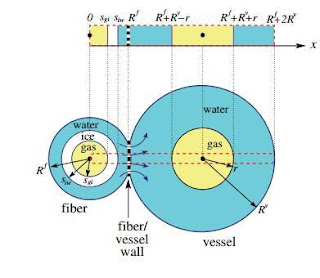..."just when you thought it was safe to go into the IHOP"...
Philadelphia, PA—For many of us, maple syrup is an essential part of breakfast—a staple accompaniment to pancakes and waffles—but rarely do we think about the complicated and little-understood physiological aspects of syrup production. Each spring, maple growers in temperate regions around the world collect sap from sugar maple trees, which is one of the first steps in producing this delicious condiment.
However, the mechanisms behind sap exudation—processes that trigger pressure differences causing sap to flow— in maple trees are a topic of much debate. In a paper published today in the SIAM Journal on Applied Mathematics, authors Maurizio Ceseri and John Stockie shed light on this subject by proposing a mathematical model for the essential physiological processes that drive sap flow.
Sugars are produced in the leaves of the maple tree by photosynthesis with the help of absorbed water, carbon dioxide, and sunlight, and are consumed for current growth, or stored as starch. In the cold, dormant season, some of the starch enters the sap, where it remains mostly frozen until the spring. In the period between this dormant state and the active growing season (during cold nights with below-freezing temperatures followed by mild, warm days with above-freezing conditions), the stored starch is converted into sugar and the sap pressure grows, allowing it to exude naturally from the tap hole when tapped.
Society for Industrial and Applied Mathematics: Pancakes with a side of math

Comments